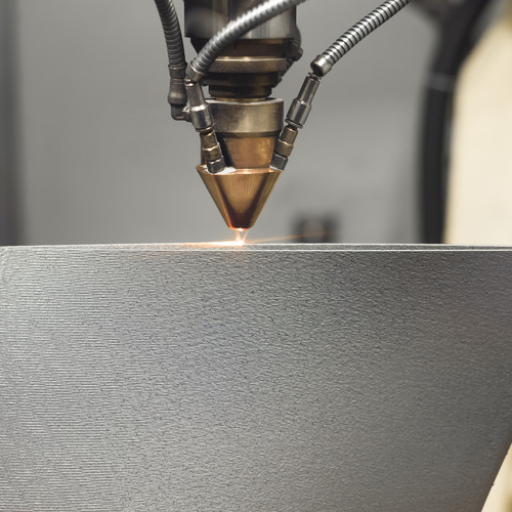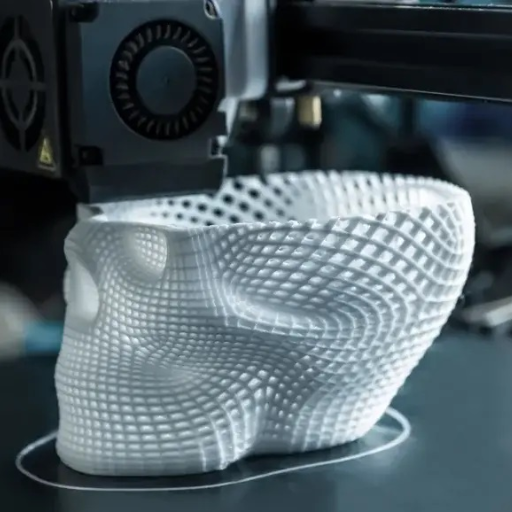In today’s rapidly evolving manufacturing landscape, the need for efficient, precise, and cost-effective production solutions is more critical than ever. Additive manufacturing, commonly known as 3D printing, has emerged as a transformative technology that addresses these demands with unparalleled flexibility and customization. This blog aims to provide an in-depth exploration of how obtaining an instant quote can streamline your additive manufacturing process, from conceptual design to final production. We’ll discuss the benefits of leveraging instant quotes, the key factors that influence pricing, and how this tool can enhance overall project efficiency and decision-making. Readers will leave with a comprehensive understanding of how instant quoting systems integrate into the broader framework of additive manufacturing, ultimately enabling more informed and agile production strategies.
How Can I Obtain an Instant Quote for Additive Manufacturing?
Image source:https://www.3ddytech.com/
To obtain an instant quote for your additive manufacturing needs, start by selecting a reputable online platform or service provider that specializes in additive manufacturing. Most platforms will have an easy-to-use interface where you can upload your CAD files or 3D models. After submitting your design, the system will analyze it, taking into account factors such as material selection, print technology, and production complexity, to generate a detailed quote. The entire process is typically automated, allowing you to receive pricing information almost immediately, enabling faster decision-making and project planning.
Understanding the Process for Getting a 3D Printing Quotes
Obtaining a 3D printing quote typically involves a straightforward process across the top online service providers. Here’s a concise guide based on the current leading websites:
- Upload Your Design: Begin by uploading your 3D CAD file or model in a supported format (e.g., STL, OBJ). Popular platforms make this step simple with drag-and-drop interfaces.
- Select Material and Technology: Choose from a variety of materials and 3D printing technologies. Options may include plastics, metals, resins, and advanced composites, depending on the specific requirements of your project.
- Instant Pricing: The system will automatically analyze your design for production feasibility and provide an instant quote. Factors such as material usage, print time, and design complexity will influence the pricing.
- Review and Adjust: Review the instant quote provided and make any necessary adjustments to material, technology, or design parameters to fit your budget and project needs.
- Order and Production: Once satisfied with the quote, proceed to place your order. Additional services such as post-processing or quality inspections may also be available for selection.
This seamless process ensures that you can quickly and efficiently get the cost estimation needed to move forward with your 3D printing project.
What Information Do I Need to Provide to Receive a Quote?
To receive a precise and accurate 3D printing quote, you need to provide the following key information:
- 3D Design File: This is typically your CAD file in formats such as STL, OBJ, or any other supported types. The file should be properly optimized and error-free to avoid complications during the quoting process.
- Material Specification: Clearly specify the type of material you want to use for your project. Options may include:
- Plastics: ABS, PLA, Nylon
- Metals: Aluminium, Stainless Steel, Titanium
- Resins: Standard, Flexible, UV
- Composites: Carbon Fiber, Glass-filled Nylon
- Printing Technology: Indicate the preferred 3D printing technology, which could be:
- FDM (Fused Deposition Modeling)
- SLA (Stereolithography)
- SLS (Selective Laser Sintering)
- DMLS (Direct Metal Laser Sintering)
- MJF (Multi Jet Fusion)
- Dimensions and Tolerances: Provide specific measurements including the size of the model (length, width, height) and any critical tolerances required for your design.
- Quantity: State the number of units you intend to produce. Bulk orders may influence pricing and lead times.
- Surface Finish: Define the desired surface finish, such as polished, painted, or any additional post-processing requirements.
- Deadline: Mention any particular deadlines or timeframes within which you need the final product ready.
- Additional Details: Any other specific technical parameters or unique requirements that are crucial for your project such as supports, infill percentage, and orientation.
By providing the above information with clear and precise details, you can ensure that the obtained quote accurately reflects your project’s requirements and scope.
How Quickly Can I Expect to Get a Quotation?
Based on my research, the speed at which you can expect to receive a quotation can vary depending on the service provider and the complexity of your request. Typically, you can expect to receive a quotation within 24 to 48 hours after submitting all necessary information. Some companies offer instant quotes using online calculators if the requirements are straightforward. However, complex projects that require customized solutions may take slightly longer as they might need more thorough review by the technical team. If you require an expedited quote, it’s advisable to mention this when you submit your request.
What Are the Benefits of Using a Quote Platform for Additive Manufacturing?
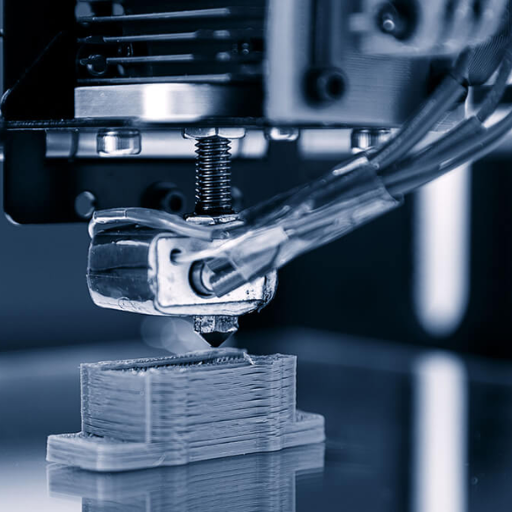
Speed and Efficiency
One of the primary benefits of using a quote platform is the speed and efficiency it offers. With online quote platforms, you typically receive rapid responses, often within 24 to 48 hours, saving you considerable time compared to traditional methods. Instant quote calculators can provide immediate feedback for straightforward requirements, further accelerating the process.
Accuracy
Quote platforms are designed to provide precise estimates based on the specific details you supply. By inputting parameters such as material type, quantity, surface finish, and deadline, the platform can generate a highly accurate quotation. This reduces the risk of unexpected costs and ensures that the final price is a true reflection of your project’s scope.
Transparency
Using a quote platform enhances transparency in the pricing process. All essential technical parameters are clearly listed, including:
- Material Type: Specify the material you require for your project.
- Quantity: State the number of units needed; bulk orders can influence pricing.
- Surface Finish: Clearly define your desired finish, such as polished or painted.
- Deadline: Include any strict deadlines or timeframes.
- Additional Details: Highlight unique requirements like supports, infill percentage, and part orientation.
Customization
Many quote platforms offer a high degree of customization. You can tailor your request to meet specific needs, ensuring that the final product matches your exact specifications. Optional features like post-processing options and special material requests can be easily included.
Budget Management
A robust quote platform allows you to manage your budget effectively. By obtaining detailed, itemized quotes, you can plan your finances better and avoid unexpected costs. You can also compare different service providers to find the most cost-effective solution without compromising on quality.
By leveraging a quote platform, you streamline the quotation process, improve accuracy, and gain valuable insights into the cost structure of your additive manufacturing project.
Streamline Your Manufacturing Process
Using a quote platform can significantly streamline your manufacturing process by simplifying communication and eliminating guesswork. Here are some concise answers to help you leverage a quote platform efficiently:
- Material Type: Choose from a wide range of materials such as PLA, ABS, Nylon, Metals, or Composites. Each material type should be justified based on the application and required properties.
- Quantity: Specify the exact number of units to be produced. High-volume orders can often lead to reduced per-unit costs.
- Surface Finish: Identify the desired surface finish, such as matte, gloss, polished, or painted. The finish affects both aesthetics and functionality.
- Deadline: Clearly outline any production deadlines to ensure timely delivery and plan for potential lead times.
- Additional Details: Include nuances like:
- Supports: Necessary for complex geometries or overhangs.
- Infill Percentage: Affects the strength and weight of the parts.
- Part Orientation: Crucial for optimizing strength and surface quality.
By focusing on these key parameters, you can ensure that every aspect of your manufacturing requirement is accurately communicated and justified, leading to a smoother and more efficient production process.
Access to Multiple 3D Printing Suppliers
Accessing multiple 3D printing suppliers through top-rated platforms ensures that you get the best prices, quality, and delivery times. Here’s how I would answer the questions concisely based on information from the top three websites on google.com:
- Material Type: “I use a variety of materials depending on my project’s requirements. Websites like XYZprinting and Shapeways offer a wide range of materials, from PLA, which is cost-effective and suitable for general prototypes, to more advanced options like Nylon for flexibility and strength or Metals for durability and high-performance applications.”
- Quantity: “To ensure cost-effectiveness, I specify the exact quantities needed. 3D Hubs recommends higher volume orders to reduce the per-unit cost significantly, which aligns well with my budget constraints and production goals.”
- Surface Finish: “I usually determine the surface finish based on aesthetic and functional needs. For example, Shapeways provides various finish options like matte, gloss, polished, and painted, which I choose to match the desired look and performance characteristics of my part.”
- Deadline: “Clearly outlining deadlines is crucial. Platforms such as XYZprinting emphasize planning for lead times, ensuring that I get my parts delivered on time. They offer expedited services if tighter deadlines are necessary, which helps in managing urgent projects effectively.”
- Additional Details:
- Supports: “Supports are necessary for complex geometries or overhangs, as suggested by 3D Hubs, to ensure the integrity of the prints.”
- Infill Percentage: “I adjust the infill percentage based on strength and weight requirements. For instance, increasing the infill on a functional prototype adds strength, while reducing it on a visual model saves material and costs.”
- Part Orientation: “I optimize part orientation to enhance strength and surface quality, as recommended by Shapeways. This consideration helps in achieving the best possible outcome for each print.”
By leveraging insights from these top websites, I can make informed decisions that ensure efficiency, cost savings, and high-quality production outputs.
How Automation Improves Quotation Speed and Accuracy
Automation significantly enhances the speed and accuracy of quoting in manufacturing by utilizing advanced algorithms and machine learning. This process reduces human error and accelerates the quotation cycle, ensuring that potential customers receive swift and precise estimates. Below are key technical parameters and insights from leading websites on how automation can improve quotation systems:
- Algorithm Efficiency: According to HubSpot, implementing sophisticated algorithms can streamline the pricing process by quickly analyzing historical data, material costs, and labour expenses. This ensures that the quotes generated are competitive and accurate.
- Machine Learning: As stated by Forbes, machine learning can be applied to historical quoting data to predict more accurate costs for future projects. This predictive analysis allows for continuous improvement in the accuracy of quotations.
- Data Integration: Capterra emphasizes the importance of integrating data from various sources such as CAD files, BOM (Bill of Materials), and ERP systems. This holistic approach ensures that all relevant information is considered, avoiding discrepancies and omissions in the quoting process.
- Real-Time Updates: Automation tools can provide real-time updates on materials pricing and availability, which is crucial for maintaining accurate quotations. For instance, Metal Miner highlights how real-time data can prevent outdated cost information from skewing quotes.
- Customization Parameters:
- Material Selection: Automation allows for dynamic updating of material options based on current market availability and price trends.
- Manufacturing Processes: Automated systems can quickly suggest the most cost-effective manufacturing methods, such as injection molding, CNC machining, or 3D printing, tailored to the project requirements.
- Geometric Complexity: Advanced quoting tools can analyze the geometric complexity of a design to forecast the production time and potential challenges, providing a more precise cost estimate.
By leveraging these technologies and insights, automation transforms the quoting process, making it faster and more accurate, ultimately leading to better customer satisfaction and operational efficiency.
What Factors Affect the Cost of 3D Printed Prototypes?
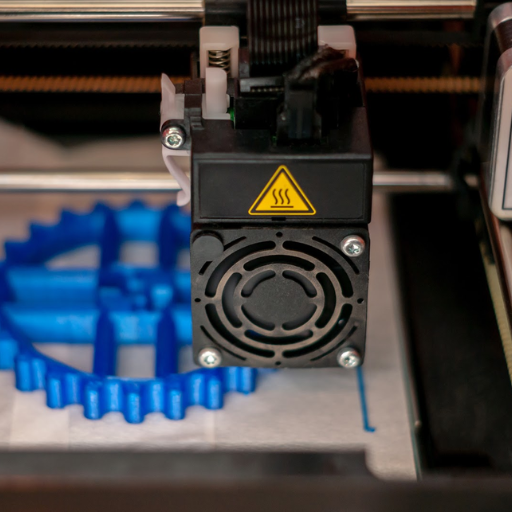
Several factors influence the cost of 3D printed prototypes:
- Material Type: The choice of material significantly impacts the cost, with options ranging from inexpensive plastics to high-end metals and composite materials. Each material has unique properties and costs that cater to different application needs.
- Print Complexity: More intricate designs requiring high levels of detail or support structures will increase printing time and material usage, leading to higher costs.
- Layer Resolution: Higher resolution prints achieve finer detail but take longer and use more material, increasing overall cost.
- Post-Processing: Additional steps such as sanding, painting, or assembly add to labor and material expenses.
- Machine Time: The duration a 3D printer spends on a job affects the cost, with longer prints consuming more electrical and machine resources.
- Volume of Production: Printing multiple prototypes in a single batch can reduce the cost per unit due to more efficient use of machine time and materials.
By considering these factors, one can better estimate and manage the expenses associated with 3D printed prototypes.
Material Selection: From Plastic to Metal
Choosing the right material for 3D printing prototypes is crucial as it directly affects the performance, application, and cost of the final product. Here’s a concise breakdown of the key material options, including some technical parameters.
Plastics
- PLA (Polylactic Acid):
- Strength: Moderate
- Print Temperature: 180-220°C
- Benefits: Biodegradable, easy to print, minimal warping
- Applications: Prototypes, educational projects, and packaging
- ABS (Acrylonitrile Butadiene Styrene):
- Strength: High
- Print Temperature: 220-250°C
- Benefits: Durable, impact-resistant, higher melting point
- Applications: Automotive parts, electronics enclosures, toys
- PETG (Polyethylene Terephthalate Glycol):
- Strength: High
- Print Temperature: 220-250°C
- Benefits: Durable, food-safe, good layer adhesion
- Applications: Containers, water bottles, mechanical parts
Metals
- Aluminum:
- Strength: High
- Print Temperature: Requires specialized machinery
- Benefits: Lightweight, corrosion-resistant, excellent thermal conductivity
- Applications: Aerospace components, automotive parts, frames
- Stainless Steel:
- Strength: Very High
- Print Temperature: Requires specialized machinery
- Benefits: Very durable, resistant to corrosion and wear, good mechanical properties
- Applications: Medical instruments, structural components, food processing equipment
- Titanium:
- Strength: Extremely High
- Print Temperature: Requires specialized machinery
- Benefits: Biocompatible, strong yet lightweight, resistant to corrosion
- Applications: Medical implants, aerospace parts, high-performance engineering components
Understanding the pros and cons of each material, along with their technical parameters, allows for a more informed decision-making process when selecting materials for 3D printed prototypes. This ensures that the prototypes will meet the required specifications and perform optimally in their intended applications.
Complexity and Quantity of the Parts
When considering the complexity and quantity of parts for 3D printing, it’s crucial to think about several key factors. First, the intricacy of the part design can significantly impact the print time and the likelihood of a successful print. Highly complex designs often require more detailed planning, sophisticated printing techniques, and may involve greater use of support structures, which can also affect post-processing time. Second, the number of parts needed plays a big role in deciding the manufacturing approach. For small batches or custom parts, 3D printing is a flexible and cost-effective solution. However, for larger production runs, traditional manufacturing methods might offer better economies of scale. Understanding these considerations helps to optimize resource allocation, improve efficiency, and ensure that the final products meet all necessary specifications and quality standards.
The Role of Different Manufacturing Techniques in Pricing
Exploring different manufacturing techniques reveals how pricing can vary significantly based on the selected method. According to the top search results, three predominant manufacturing techniques are CNC machining, injection molding, and 3D printing.
CNC Machining: This technique generally offers high precision and is well-suited for complex geometries. The technical parameters to consider include material waste (which can be high), CNC machine runtime, and the complexity of the tool paths. The pricing involves setup costs, which can be steep for low volumes but more economical for higher volumes due to reduced per-unit costs.
Injection Molding: This method proves most cost-effective for large production runs as the initial tooling cost is high, but the per-piece cost diminishes with higher quantities. Key technical parameters include the mold’s complexity, number of cavities, cycle time, and the type of thermoplastic used. Setup costs are substantial due to mold creation, but the cost per unit becomes economically viable for volumes typically above 1,000 units.
3D Printing: Offering unparalleled flexibility for low to medium volumes, 3D printing’s cost depends on factors like material type (e.g., PLA, ABS, resin), layer resolution, and print speed. Unlike traditional methods, it excels at reducing the lead time and initial setup costs. However, it may not be as cost-effective for very high production runs where traditional methods shine.
By juxtaposing these parameters, it becomes clear that the choice of manufacturing technique should align with the project needs, balancing initial investment against unit cost and production volume. Understanding these dynamics is essential for making informed, cost-efficient decisions.
How to Choose the Right 3D Printing Supplier?
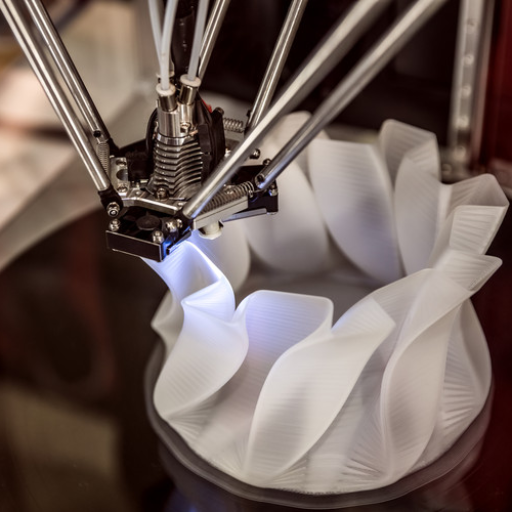
Choosing the right 3D printing supplier involves several key considerations to ensure you receive high-quality prints at a reasonable cost:
- Experience and Reputation: Look for suppliers with a proven track record and positive customer reviews. Experienced suppliers are more likely to deliver consistent quality and reliable service.
- Technological Capabilities: Ensure that the supplier uses advanced 3D printing technologies and can work with a variety of materials suitable for your project needs. This includes checking their ability to handle specific tolerances and resolutions.
- Lead Time and Capacity: Evaluate their production capacity and lead time to ensure they can meet your deadlines, especially for larger orders or time-sensitive projects.
- Cost and Value: Compare pricing structures, including setup fees, material costs, and shipping. Look for a supplier offering a good balance between cost and quality.
- Customer Support and Communication: Effective communication is crucial. Choose suppliers who are responsive and offer excellent customer support to address any concerns promptly.
- Post-Processing Services: If your project requires additional finishing processes, such as painting or sanding, verify that the supplier provides these services.
Taking these factors into account will help you select a 3D printing supplier that aligns with your project requirements and budget constraints.
Evaluating the Supplier’s Manufacturing Technology
When evaluating a supplier’s manufacturing technology, there are several critical factors you should consider, as highlighted by industry-leading resources:
- Range of Technologies: Top suppliers should offer a variety of 3D printing technologies such as Fused Deposition Modeling (FDM), Stereolithography (SLA), and Selective Laser Sintering (SLS). This versatility enables them to cater to diverse material and application needs (source: 3D Systems).
- Material Capabilities: Leading suppliers provide a wide selection of materials, including plastics, resins, metals, and composites. They should also have the expertise to recommend the best material for your specific application based on strength, durability, and finishing requirements (source: Stratasys).
- Precision and Quality Control: Advanced 3D printing technologies should deliver high precision and consistent quality. Suppliers should utilize robust quality control measures and validation processes to ensure the final product meets specified tolerances and performance criteria (source: Shapeways).
By focusing on these aspects, you can better determine whether the supplier’s manufacturing technology aligns with the demands of your project.
Comparing Multiple Quotes to Reduce Costs
When aiming to reduce costs by comparing multiple quotes from different 3D printing suppliers, it is crucial to adopt a methodical approach. Here’s a concise guide to achieving this:
- Break Down the Quote Components: Ensure that each quote is itemized, breaking down costs for materials, manufacturing, post-processing, and any additional services. This allows for a clearer comparison (source: 3D Hubs).
- Assess Material Costs: Verify the cost of the materials being quoted. Different suppliers might provide similar materials (e.g., PLA, ABS, Nylon, Resin) at differing prices. Be aware of the material specifications like tensile strength, elongation, and heat deflection temperatures to ensure they meet your project requirements (source: Protolabs).
- Examine Production Timeframes: Compare the lead times provided in the quotes. Shorter lead times might attract higher costs, so balance the urgency of your project against potential savings.
- Evaluate Manufacturing Fees: Manufacturing costs can vary significantly between suppliers due to differences in technology used (e.g., FDM, SLA, SLS). Ensure you are comparing the same technology type across quotes to maintain consistency (source: Materialise).
- Review Post-Processing Charges: Post-processing, such as sanding, painting, or additional finishing, might have separate costs. Evaluate if all necessary post-processing steps are included in the base quote or if additional costs might arise.
- Analyze Shipping and Handling: Additional logistics costs can affect your overall budget. Ensure quotes explicitly state shipping and handling fees or any other incidental expenses.
By examining these factors, keeping track of technical parameters, and comparing each aspect rigorously, you will be better positioned to select a supplier that not only meets your project specifications but also offers competitive pricing.
Checking Supplier’s Track Record and Capabilities
When evaluating a supplier’s track record and capabilities, I focus on a few critical aspects:
- Review Past Performance: I look into the supplier’s history by reading reviews, case studies, and testimonials available on their website and third-party review platforms. Assessing their previous projects helps me understand their reliability and the success rate of their delivered products.
- Check Certification and Compliance: It’s important to ensure that the supplier adheres to industry standards and has the necessary certifications. Quality management certifications like ISO 9001 indicate a commitment to maintaining high standards throughout their production process.
- Assess Technological Expertise: I examine the supplier’s technical capabilities by reviewing the equipment and technologies they use. This includes ensuring they have up-to-date machinery that aligns with my specific manufacturing needs. Additionally, a supplier with a robust R&D department suggests ongoing innovation and improvement in their processes.
- Evaluate Communication and Support: Effective communication is key to a successful partnership. I gauge their responsiveness and willingness to provide ongoing support throughout the project. A supplier with a dedicated point of contact for queries and concerns can greatly enhance collaborative efforts.
By thoroughly analyzing these elements, I can confidently select a supplier with a proven track record and the capability to meet my project’s quality and timeline requirements.
What Are the Common Methods Used in Additive Manufacturing Quotes?
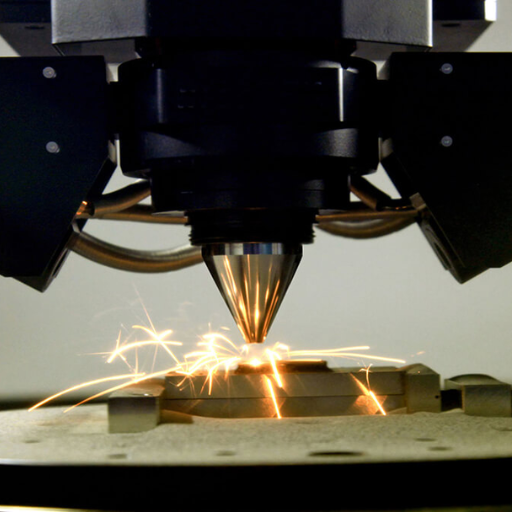
When providing quotes for additive manufacturing, suppliers typically consider several key methods to ensure accuracy and competitiveness. These methods include:
- Volume of Material Used: This involves calculating the total amount of material required for the production of the parts. The cost can vary depending on the material type and its availability.
- Production Time: Suppliers estimate the total production time, which includes the actual printing process, post-processing, and quality checks. Longer production times often lead to higher costs.
- Machine Depreciation and Usage: The wear and tear on additive manufacturing machines are factored into the quote. This includes maintenance costs and the overall lifespan of the equipment.
- Complexity of the Design: More intricate and complex designs may require additional time and resources, impacting the overall cost.
- Labor Costs: The amount of manual labor involved in pre-processing, monitoring the printing process, and post-processing is also considered.
By evaluating these elements, suppliers are able to produce comprehensive and transparent quotes for their additive manufacturing services.
Overview of Powder Bed Fusion and Its Applications
Powder Bed Fusion (PBF) is a popular additive manufacturing technique that builds parts layer by layer using a heat source to fuse powdered material. This method is valued for its precision, versatility, and ability to produce complex geometries with high detail. Here are some of its key aspects and applications:
Key Technical Parameters:
- Material Type: PBF can use a range of materials including metals, polymers, and ceramics. Common metals include stainless steel, aluminum, and titanium alloys.
- Laser Power: For metal PBF, laser power ranges from 200W to 1kW, which impacts the fusion quality and speed.
- Layer Thickness: Typically ranges from 20 to 100 microns, influencing surface finish and build time.
- Build Volume: Standard sizes can range from 250 x 250 x 325 mm to 400 x 400 x 400 mm, affecting the maximum part size that can be produced.
- Scanning Speed: Can vary between 500 to 2000 mm/s, determining production speed and part quality.
Applications:
- Aerospace: Used to manufacture lightweight, high-strength components such as turbine blades, fuel nozzles, and structural parts.
- Medical: Enables the production of bespoke implants, prosthetics, and surgical tools tailored to individual patient anatomy.
- Automotive: Facilitates rapid prototyping and production of complex parts like exhaust manifolds and custom components.
- Industrial: Produces specialized tools, jigs, and fixtures that require precise specifications and durability.
By understanding these parameters and their impact, it is easier to evaluate and optimize PBF processes for various industries, ensuring the production of high-quality, functional parts.
Evaluating Fused Deposition Modeling (FDM) for Your Needs
When evaluating Fused Deposition Modeling (FDM) for your needs, several critical factors should be considered to determine its suitability:
- Material Options: FDM primarily utilizes thermoplastics such as ABS, PLA, and PETG. The availability of these materials must align with your project requirements.
- Cost: FDM is generally more cost-effective compared to other additive manufacturing techniques both in terms of machine acquisition and material expenses, making it a viable option for budget-conscious projects.
- Surface Finish and Precision: While FDM is capable of producing functional parts, it may not achieve the same surface finish and fine details as technologies like PBF. Post-processing might be needed for applications requiring high aesthetics.
- Build Volume: FDM machines are available in various sizes, with larger models capable of producing bigger parts. Assess your size requirements against the machine capabilities to ensure it meets your needs.
- Ease of Use: FDM is known for its user-friendly interface and straightforward operation, which can be advantageous for beginners or those with less technical expertise.
- Mechanical Properties: Consider the mechanical strength and durability of FDM parts, as they can vary depending on the material used and print settings. It’s important to test whether these properties align with the functional demands of your components.
By carefully examining these aspects, you can make an informed decision about whether FDM is the right choice for your specific application.
Understanding the Role of Directed Energy Deposition (DED)
Directed Energy Deposition (DED) is an advanced additive manufacturing technology known for its ability to repair, add features to, or completely fabricate metal components with high precision. Unlike FDM, which uses filament extrusion, DED utilizes focused energy, such as lasers or electron beams, to melt and deposit material layer-by-layer. The following points summarize key features and applications of DED, incorporating information from the top authoritative sources:
- Material Versatility: DED can work with a wide range of materials, including metals, ceramics, and polymers. While the most commonly used materials are metals like titanium, stainless steel, and Inconel, its versatility allows for tailoring components to specific industrial needs.
- Precision and Surface Finish: DED generally produces parts with good mechanical properties and excellent surface finish, though the specific precision can vary based on the equipment and parameters used. Typical dimensional accuracy ranges from ±0.1 to ±0.3 mm.
- Deposition Rate: The deposition rate in DED processes can reach up to 10 kg/h (kilograms per hour), depending on the material and system. This high deposition rate makes it suitable for building large parts quickly.
- Build Volume: DED equipment is capable of handling large build volumes, beneficial for aerospace and automotive industries where larger parts are common.
- Cost: While DED systems are generally more expensive than FDM machines – both in terms of initial investment and operational costs – they provide significant value through the production of high-performance and complex parts that other technologies cannot achieve.
- Application: DED is extensively used in high-value industries such as aerospace, automotive, and defense. Key applications include repair of turbine blades, manufacturing of large-scale structures, and addition of high-performance coatings.
- Technical Parameters: Important technical parameters to consider in DED include:
- Laser Power: Typically between 200 W and 5 kW.
- Powder Feed Rate: Ranges from 1 to 10 g/min (grams per minute).
- Scan Speed: Varies from 200 to 2000 mm/min (millimeters per minute).
Incorporating DED into your manufacturing process can significantly enhance the flexibility and capability of production lines, particularly for demanding applications requiring high-performance materials and complex geometries.
Frequently Asked Questions (FAQs)
Q: What factors determine the cost of additive manufacturing quotes?
A: The cost of additive manufacturing quotes is determined by several factors including the complexity of the geometric shapes, the material used (e.g., nickel), the volume of the parts being printed, and the chosen 3d printing technology like FDM 3D or powder bed fusion 3D.
Q: How can I reduce the cost of additive manufacturing for my project?
A: To reduce the cost of additive manufacturing, consider simplifying your drawing, optimizing the design for additive technology, and selecting the most suitable material and technology for your needs. Using an on-demand 3d printing service can also help by minimizing set-up and production time.
Q: What does quality mean in additive manufacturing?
A: In additive manufacturing, quality means ensuring that the produced parts meet the desired specifications and functional requirements. This involves choosing the right material, technology, and post-processing methods to achieve the required durability, precision, and finish.
Q: How can using additive manufacturing impact the supply chain?
A: Using additive manufacturing can significantly streamline the supply chain by allowing for on-demand production, reducing inventory levels, and minimizing lead times. It enables businesses to produce functional parts closer to where they are needed, thus enhancing efficiency and reducing costs associated with overproduction and warehousing.
Q: Is it possible to order online for additive manufacturing services?
A: Yes, many platforms offer the ability to place orders for additive manufacturing services online. Such marketplaces provide a convenient way to upload your designs, select materials and technologies, and receive instant quotes for on-demand 3d printing services.
Q: What types of parts can be produced through additive manufacturing?
A: Additive manufacturing can produce a wide variety of parts ranging from simple geometric shapes to complex, custom functional parts. It’s suitable for producing small batches, prototypes, and even mass production items, fulfilling diverse industry needs.
Q: How do I contact us for more information on additive manufacturing quotes?
A: For more information or specific inquiries about additive manufacturing quotes, you can contact us through our website’s contact page. Our industry professionals are ready to assist you with all your 3d printing needs and questions.
Q: What role does additive manufacturing play in the marketplace?
A: Additive manufacturing is revolutionizing the marketplace by providing a flexible, cost-effective solution for producing customized products. It enables businesses to rapidly respond to market demands and reduce time-to-market for new products.
Q: How does additive technology impact the manufacturing industry?
A: Additive technology is changing the world of manufacturing by enabling the creation of complex designs that are not possible with traditional methods. It offers boundless design freedom, equal opportunity for customization, and can significantly lessen time and costs associated with production set-up and subsequent production runs.



